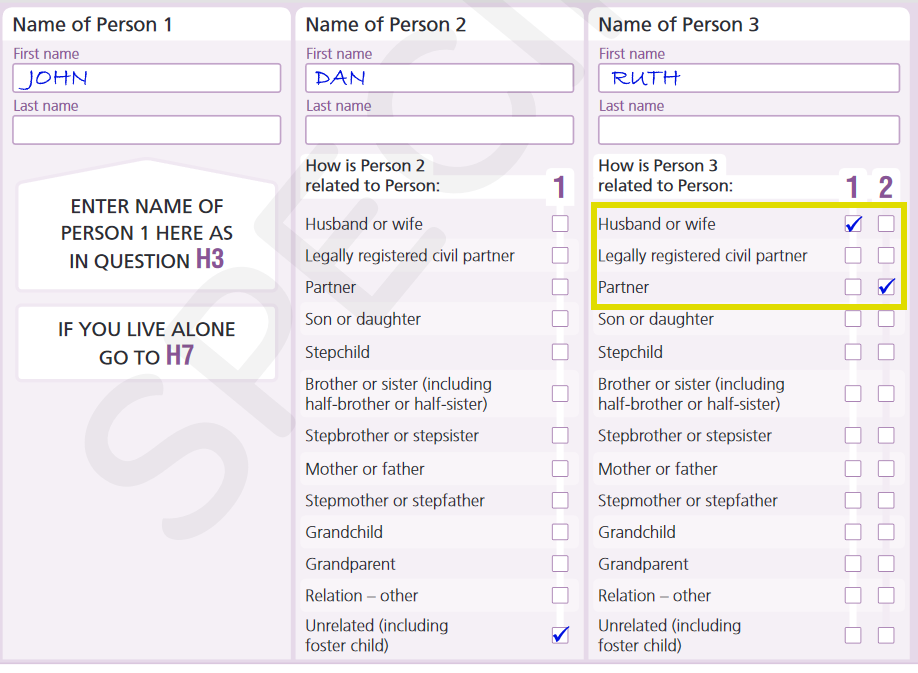Unimpressed with the slow response time that I and others were getting to my query to the
Office of National Statistics (to which I still never received a response) the month before last, Zoe
O’Connell decided to send a Freedom of Information Act request demanding a
response to a couple of similar questions. After some hassling (I suppose they’ve been busy, with the census and all), they finally responded. The original request and
the full response is online now, as is Zoe’s blog post about the response. But here’s the short version of the response:
Polygamous marriages are not legally recognised in the UK and therefore any data received from a questionnaire that appeared to show polygamous relationship in the manner that you
suggest would be read as an error. It is recognised that the majority of respondents recording themselves as being in a polygamous relationship in a UK census do so erroneously, for
example, ticking the wrong box for one household member on the relationships question.
Therefore, the data to be used for statistical purposes would be adjusted by changing one or more of these relationships, so that each respondent is in a relationship with no more
than one person. This is consistent with all previous UK censuses, and others around the world.
A copy of the original questionnaire would be retained as part of the historical record which would show such relationships as they were recorded. We do not attempt to amend the
original record.
Any mismatches between the indicated sex and marital status of respondents will be resolved using a probabilistic statistical system which will not necessarily deal with each case
in the same way. The system will look at other responses for each person, including those for the Household relationships, and will alter one or more variables to make the response
consistent. In the example that you propose, it would either change the sex of one individual, or change the marital status to “Same-sex civil partnership”, depending on which is
considered statistically more likely to be correct.
Honestly, I’m not particularly impressed. They’ve committed to maintaining a historical record of the original, “uncorrected” data, so that future statisticians can get a true picture
of the answers given, but this is about the only positive point in this response. Treating unusual data as erroneous is akin to pretending that a societal change doesn’t exist, and that
this approach is “consistent with previous censuses” neglects to entertain the possibility that this data has value that it might not have had previously.
Yes, there will be erroneous data: people who accidentally said that they had two husbands when they only have one, for example. And yes, this can probably (although they don’t state
how they know to recognise this) be assumed to be more common that genuine cases where somebody meant to put that on their census (although there will also be an error
rate amongst these people, too). But taking the broad brush approach of assuming that every case can be treated as an error reeks of the same narrow-mindedness as the (alleged;
almost-certainly an urban legend) statement by Queen Victoria that lesbianism “didn’t exist.”
“Fixing” the data using probabilities just results in a regression towards the mean: “Hmm; this couple of men say they’re married: they could be civil partners, or it could be a
mistake… but they’re in a county with statistically-few few gay people, so we’ll assume the latter.” Really: what?
I’m not impressed, ONS.
Update: a second FoI request now
aims to determine how many “corrections” have been made on censuses, historically. One to watch.

